In the late 1940s, the US military was in a sorry state. The public and the Truman administration wanted a balanced budget, and were willing to make deep cuts in defense spending to get it, backed by the knowledge that the US had a monopoly on the atomic bomb. In 1947, the Army and the Navy had been unified under the new National Military Establishment,1 and the Air Force had been fully separated from the Army, with the mission of delivering such weapons with its fleet of long-range bombers. Its senior officers were mostly veterans of the battle over airpower in the 20s, and while the initial act had left the Navy's aviation components more or less intact, many saw a chance to reverse this and bring all military aviation under their control, particularly as they claimed to offer more military power at a lower price. They were initially thwarted by James Forrestal, former Secretary of the Navy and first Secretary of Defense, but he was fired in early 1949 due to his opposition to the ongoing budget cuts.
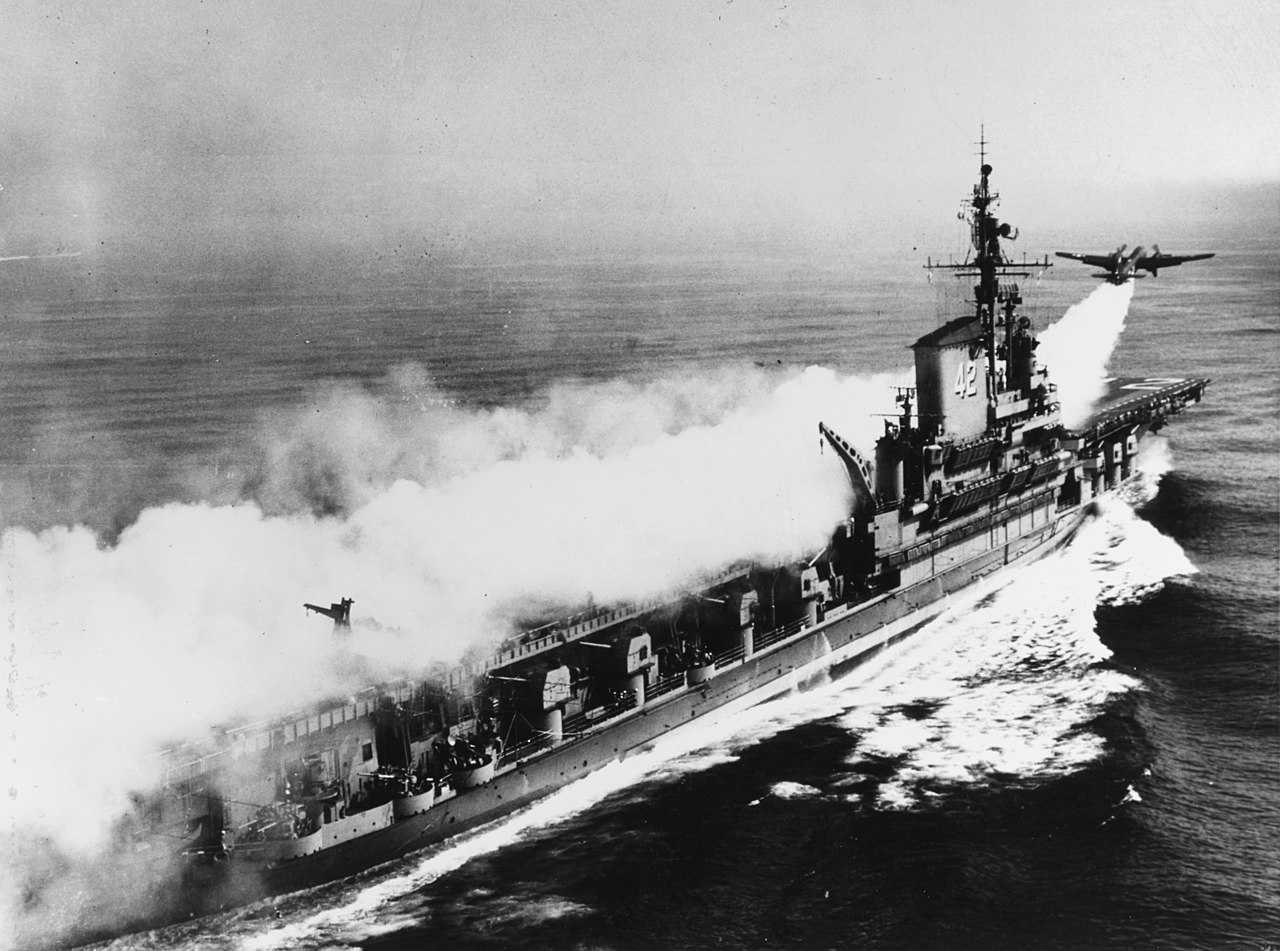
A P2V-3C takes off from Franklin D. Roosevelt
The Navy hadn't been idle. Much of the Air Force's political power derived from its monopoly over the atomic delivery mission, something the Navy had set out to challenge. The nuclear weapons of the day still weighed 10,000 lb, exceeding the payload of any naval aircraft under development at the end of the war, but mere days after the atomic bomb's existence was revealed to the public, a competition was started for a plane capable of carrying one from a carrier. The result was the AJ Savage, an aircraft with two piston engines and a turbojet buried in the fuselage for when high speed was needed. However, it would take some time to put the Savage into service, so to give an interim capability, the Navy modified a dozen land-based P2V Neptunes to take off from aircraft carriers through the use of JATO bottles, and to carry a single Little Boy-type bomb. Unfortunately, there was still no way to land on the carrier,2 so the planes would have to be craned aboard before the mission and would ditch when they returned. The first flight in April 1948 gave the Navy at least a nominal nuclear strike capability from the three Midway class carriers, although it never deployed operationally.
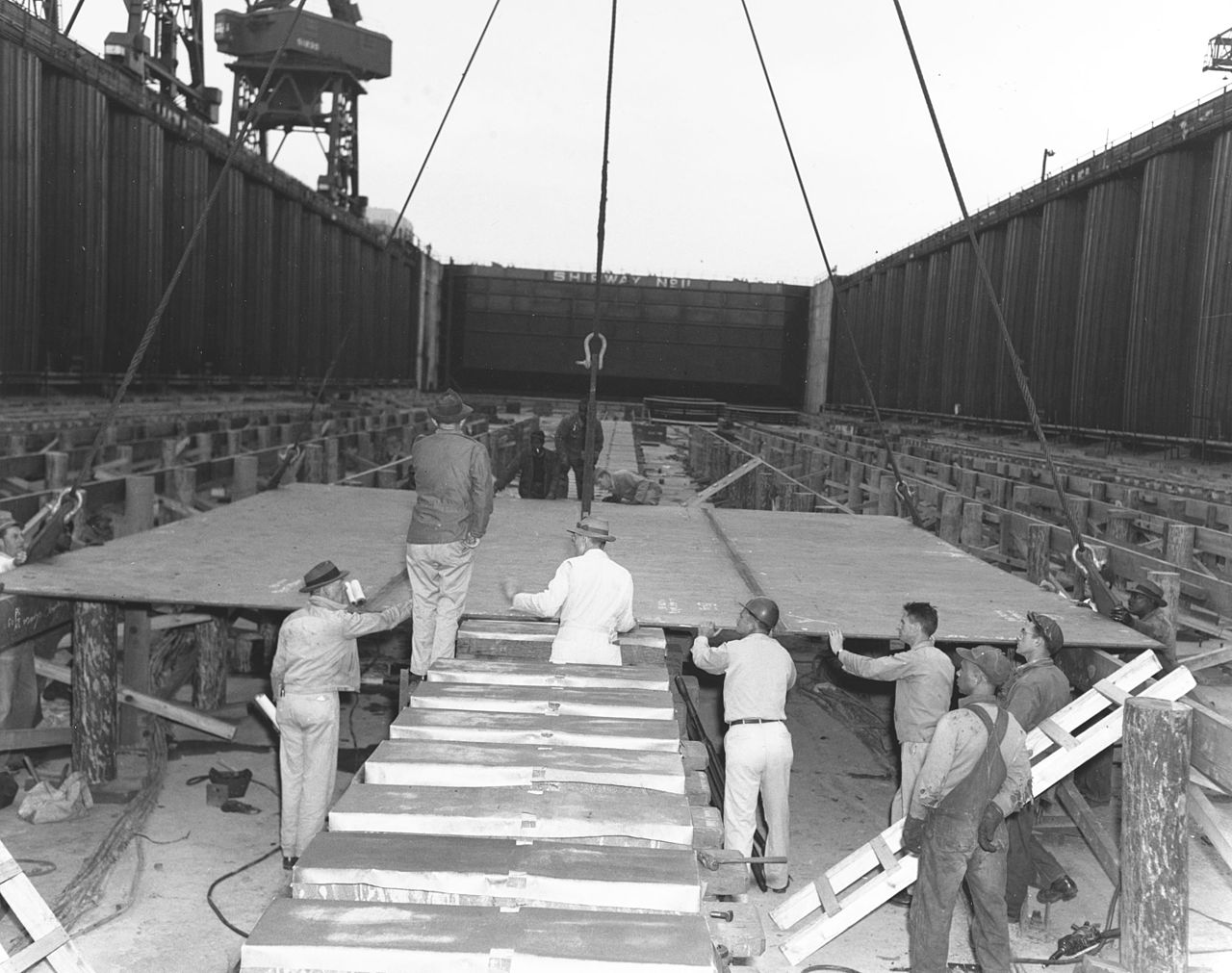
Laying the keel of United States
While the Savage might be marginally capable of operating from the Midways, the Navy wanted to supplement it with a carrier designed from the start to operate heavy strike bombers, which were expected to reach 100,000 lbs within a few years. The resulting design was massive, a third heavier than any existing carrier, and was designed with a flush deck and four catapults, one forward and one aft on each side of the ship. This was intended to allow the carrier, named United States, to quickly launch strikes of bombers and long-range fighters, and even gave some capability to launch and land aircraft at the same time.3 The 18 heavy bombers drove the design's size, although in the end, United States was not as dedicated to the nuclear strike role as some initial concepts, which had discarded the hangar entirely on the grounds that strike bombers couldn't be stored below, and no other aircraft were necessary. United States was laid down on April 18th, 1949, and the future for naval aviation looked reasonably bright.
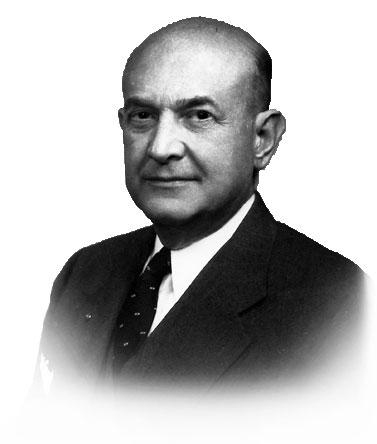
Louis Johnson
Into the picture came Forrestal's replacement as Secretary of Defense, Louis Johnson. Johnson, a key player in Truman's surprising victory in the 1948 election and a noted partisan of the Air Force, was fiercely determined to push through Truman's defense budgets, derived by taking tax revenues and subtracting what was needed for domestic spending without regards for the security situation. The Navy and Marine Corps were particular targets. In Johnson's own words, "There's no reason for having a Navy and Marine Corps. General Bradley (Chairman of the Joint Chiefs of Staff), tells me that amphibious operations are a thing of the past. We'll never have any more amphibious operations. That does away with the Marine Corps. And the Air Force can do anything the Navy can do, so that does away with the Navy." Instead, Johnson's plans rested on the Air Force's strategic bombers, notably the new B-36 Peacemaker, which was at least theoretically capable of flying from bases in the US to targets in the Soviet Union.4
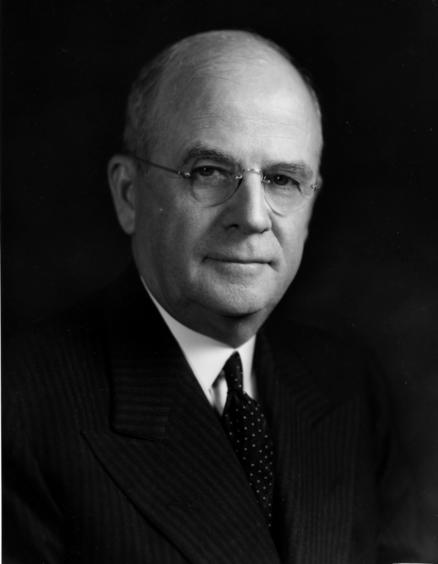
Francis P. Matthews
The United States, as the Navy's answer to the Air Force's bombers, was an obvious target in Johnson's quest for budget cuts, and she was cancelled on April 23rd, a month after Johnson took office and five days after her keel was laid.5 Neither Congress nor Secretary of the Navy John Sullivan were consulted, and Sullivan, who had been out of town at the time and specifically requested that Johnson not make any decision until he returned, resigned in protest. Johnson recommended Omaha lawyer Francis Matthews as his replacement, despite Matthews' greatest qualification for the post being his ownership of a rowboat.6 Truman approved this appointment, as did the Senate, a decision which proved a disaster for the Navy. Matthews, beholden to Johnson and unfamiliar with the Navy, was an ineffective advocate for his service in the coming storm.
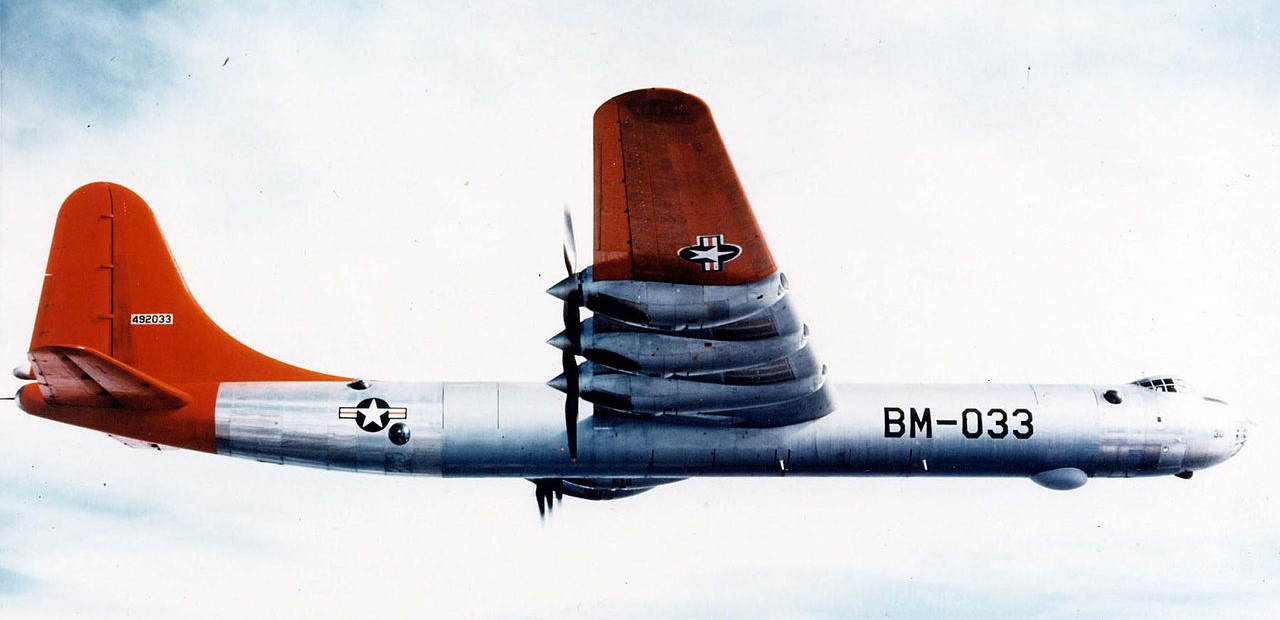
A B-36B Peacemaker
During the months after the cancellation of United States, members of the naval establishment poured fuel on the fire with direct attacks on the B-36 program. Cedric Worth, a civilian on the staff of the Undersecretary of the Navy, compiled an anonymous document containing every rumor and innuendo about the B-36, charging that it had not been cancelled because Johnson and Air Force Secretary Stuart Symington had financial interests in the program. Worth's paper was circulated to members of Congress, although concern for public response to the airing of such accusations delayed hearings. The Navy also publicly disputed the Air Force's claims that the B-36 was immune to interception by existing fighters, claiming that the F2H Banshee would be effective even if the USAF F-86 wasn't. Johnson managed to squelch any competitive trials, but the question lingered.7 Eventually, rumors of the discord over the B-36 forced Carl Vinson, chairman of the House Armed Services Committee, to hold hearings covering not just the B-36 but also the broader issue of service unification.8
These hearings would form the climax of the brewing conflict between the Navy and Matthews, and we'll pick up their story next time.
1 It was renamed to the DoD in 1949. ⇑
2 The airplanes, designated P2V-3C, were in fact fitted with hooks, and trials were carried out with landings ashore, but it was never attempted at sea after one was botched by a non-carrier pilot. ⇑
3 Note that this was before the angled deck was introduced. ⇑
4 While there was sufficient range for a strike from the US to the edges of the USSR, aerial refueling would have been needed for deeper strikes, probably from forward-based tankers. I should also add that the B-36 is a very cool airplane, but not an adequate replacement for the carriers in the strike role. ⇑
5 One of my sources claims this had little to do with budget, and was simply due to Johnson's opposition to the Navy's participation in the nuclear strike role. ⇑
6 The actual qualification was apparently that Matthews, like Sullivan, was Catholic. ⇑
7 In fact, the Air Force's belief in the B-36's invulnerability was probably not well-founded. The USAF placed a particular emphasis on high speed, which in turn meant high wing loading/small wings. At high altitude, this is a particular problem, and other aircraft not designed to these specifications would probably have done better. ⇑
8 One amusing follow-on to this is that Louis Johnson was given a ride in a P2V-3C from Midway later in 1949. The pilot told him that if the starboard engine failed, the Navy would have a flush-deck carrier, and he'd be in the middle of it. This leaked to the press, and the Navy's higher-ups were not amused. ⇑

Comments
Was aerial refueling reliable enough at the time to make that a viable strategy?
Curtis LeMay and co were working very hard to make it reliable enough. It definitely was on the timescales that something like United States could have been built.
This sentence is before the two services are named, so it's not clear what was unified.
Looking at the seakeeping model for the USS United States on the wiki page I'm struck by how much the model bombers look like B-1's, and really nothing like contemporary bombers of the late 40s.
@Kyzentun
I forgot that not everybody has extensively studied the history of interservice relations in the US.
@Chuck
The same thing occurred to me. I'm not sure exactly why those models are there, or what they're based on, as the design spec at that point was the program which eventually resulted in the A3D Skywarrior.
Even more than a very short, stubby B-1, I think the model "bombers" look like a drastically scaled-up F9F-8 (albeit with a whole new wing). Did Grumman respond to that specification?